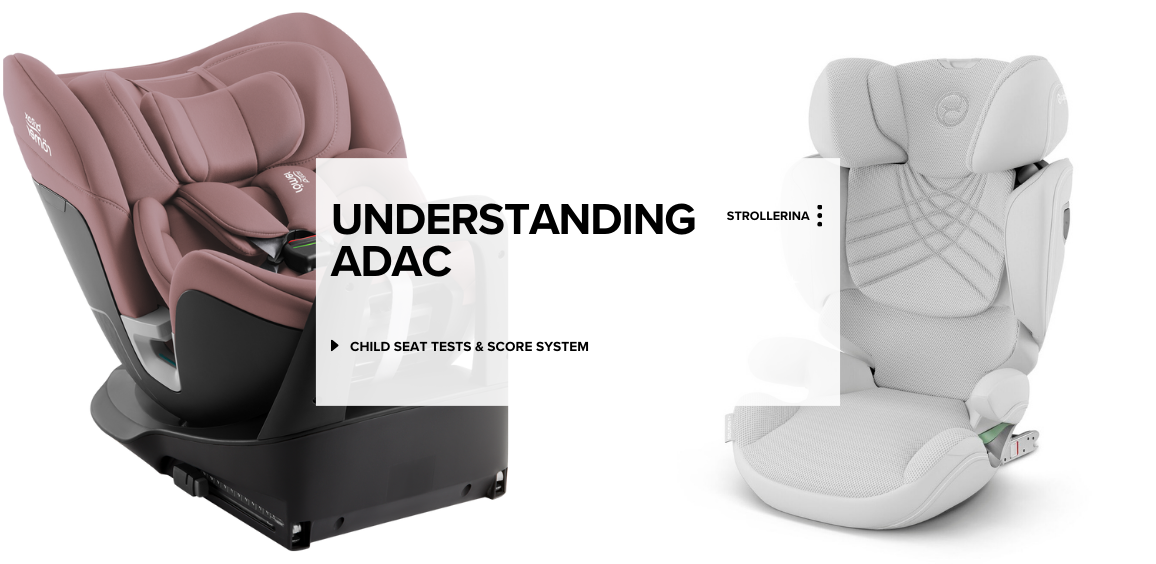
- Published on
- views・
Understanding ADAC Child Seat Tests & Score System
- Authors
- Name
- lombosmonika
- https://x.com/MonikaLombos
Understanding ADAC Child Seat Tests
When it comes to the safety of children in cars, the ADAC child seat tests are among the most comprehensive evaluations available. These tests not only assess the crash performance of child seats but also consider other critical factors, including ergonomics, ease of use, and pollutants. Here's everything you need to know about how these tests work and what the results mean.
How the ADAC Child Seat Test Works
ADAC's child seat tests are rigorous, evaluating seats based on multiple factors to ensure the highest standards of safety and usability:
1. Crash Testing
ADAC conducts both frontal impact (at 64 km/h) and side impact (at 50 km/h) tests. These simulate real-world crash scenarios to evaluate how well the child seat protects its occupant.
- Frontal impact tests examine how well the seat secures the child and minimizes forward movement.
- Side impact tests evaluate the seat's ability to protect the child’s head and torso from lateral forces.
2. Ergonomics and Comfort
ADAC assesses the seat’s design for comfort and support. This includes:
- The fit for children of different sizes.
- Ease of installation in various vehicles.
- Seating position to ensure children remain comfortable during long rides.
3. Ease of Use
A well-designed seat should be easy for parents to handle and install. ADAC evaluates factors such as:
- Clear instruction manuals.
- The complexity of harness systems.
- Risk of misuse during installation or daily operation.
4. Pollutant Testing
ADAC has included pollutant testing since 2020 to ensure that child seats are not only safe in crashes but also free of harmful substances. Materials used in the seat, such as fabric, foam, and plastic, are tested for:
- Phthalates: Chemicals that can disrupt hormones.
- Flame retardants: Potentially toxic substances used for fire safety.
- Formaldehyde and VOCs: Harmful gases that can cause respiratory irritation.
- Heavy metals: Such as lead and cadmium, which can be toxic to children.
Seats that exceed permissible levels of these chemicals receive a lower overall score.
The Basis of the ADAC Scoring System
ADAC uses a point-based system to evaluate child seats, with scores ranging from 0.6 (very good) to 5.5 (poor). A lower score indicates better performance. The final score is a weighted average based on the following categories:
1. Security
- Risk level of injury in a side crash.
- Risk level of injury in a frontal crash.
- Belt path.
- The child seat is stable in the vehicle or not.
2. Ease of Use
- Risk level of misuse.
- Complexity of strapping the child in.
- Easily understandable instructions and warning labels or not.
- Seat installation is labor-intensive or not.
- Car seat weight.
3. Ergonomics
- Leg support.
- View of the child to the outside.
- Padding.
- Favorable seating position.
- Space requirement.
- Overall space.
4. Pollutants
- Pollution levels (or another specified level of pollution).
5. Processing and Cleaning
- Machine washable or not.
- Difficulty of removal of the cover.
- Workmanship.
The overall score is calculated by applying specific weightings to these categories, with security carrying the most significant influence on the result.
What Do the Scores Mean?
- 0.6–1.5: Very good
- 1.6–2.5: Good
- 2.6–3.5: Satisfactory
- 3.6–4.5: Adequate
- 4.6–5.5: Poor
Seats must achieve high marks in security to be recommended, and a low score in one category can significantly impact the overall rating.
The Importance of Pollutant Testing
The inclusion of pollutant testing in the ADAC evaluations addresses concerns about the health risks of chemical exposure. Children are particularly vulnerable to environmental toxins, making it essential to minimize contact with harmful substances in products they use daily.
How Pollutants Are Tested
- Material Analysis: Samples are taken from the seat's cover, foam, and plastic components.
- Chemical Screening: Materials are tested for phthalates, flame retardants, VOCs, and heavy metals.
- EU Compliance: ADAC ensures that seats meet EU regulations, such as REACH standards for chemical safety.
- Rating Adjustments: Seats with excessive levels of pollutants receive deductions, affecting their overall score.
Why This Matters
A seat that passes pollutant testing ensures that children are protected not only in the event of a crash but also from long-term health risks associated with harmful chemicals.
Recommendations for Parents
When choosing a child seat, consider the following:
- Check the ADAC Ratings: Look for seats with low overall scores, especially in the safety and pollutant categories.
- Match the Seat to Your Child: Ensure the seat fits your child’s height and weight according to the manufacturer’s guidelines.
- Consider Installation Requirements: Some seats require ISOFIX anchors, which may not be available in all vehicles.
- Opt for Rear-Facing Seats for Younger Children: Rear-facing seats provide better protection for children under two years old.
- Avoid Used Seats: If purchasing a used seat, ensure it meets the latest standards (UN Reg. 129) and has no visible wear or damage.
Videos about ADAC tests
Conclusion
ADAC's child seat tests are a valuable resource for parents, providing insights into the safety, comfort, and environmental impact of various models. By considering these evaluations, parents can make informed decisions that prioritize their child’s safety and well-being. Always choose a seat that aligns with your child’s size and your vehicle's specifications, and check the pollutant ratings to ensure a healthier environment for your little one.